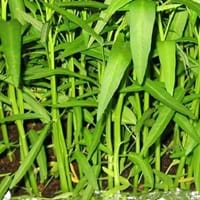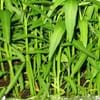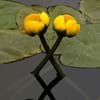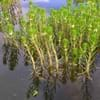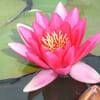Life Span
Annual and Perennial
Perennial
Types
Not Available
Not Available
Habitat
subtropical regions, Tropical regions
Scrubs, tussock grasslands, Upland savannas
USDA Hardiness Zone
8-15
10-11
Sunset Zone
21,22
8, 9, 12, 13, 14, 15, 16, 17, 18, 19, 20, 21, 22, 23, 24
Habit
Spreading
Upright/Erect
Flower Color
White, Lavender
Lemon yellow
Flower Color Modifier
Not Available
Bicolor
Fruit Color
Green, Reddish Plum
Gray Green
Leaf Color in Spring
Green
Blue Green
Leaf Color in Summer
Green
Blue Green
Leaf Color in Fall
Green
Blue Green
Leaf Color in Winter
Green
Blue Green
Leaf Shape
Long Elliptic
Long Narrow
Plant Season
Spring, Summer, Fall, Winter
Spring
Sunlight
Full Sun, Partial Sun
Full Sun
Growth Rate
Very Fast
Slow
Type of Soil
Clay, Loam, Sand
Loam, Sand
The pH of Soil
Acidic, Neutral, Alkaline
Acidic, Neutral, Alkaline
Soil Drainage
Poorly Drained
Well drained
Bloom Time
Indeterminate
Spring, Late Winter
Tolerances
Wet Site
Drought
Where to Plant?
Container, Ground, Pot
Ground
How to Plant?
Seedlings
Seedlings
Plant Maintenance
Medium
Medium
Watering Requirements
Requires regular watering
Do not water excessively
In Summer
Lots of watering
Lots of watering
In Spring
Moderate
Moderate
In Winter
Average Water
Average Water
Soil pH
Acidic, Neutral, Alkaline
Acidic, Neutral, Alkaline
Soil Type
Clay, Loam, Sand
Loam, Sand
Soil Drainage Capacity
Poorly Drained
Well drained
Sun Exposure
Full Sun, Partial Sun
Full Sun
Pruning
Remove damaged leaves, Remove dead branches, Remove dead leaves
Remove dead or diseased plant parts, Requires little pruning
Fertilizers
All-Purpose Liquid Fertilizer
All-Purpose Liquid Fertilizer, No fertilizers needed
Pests and Diseases
Bacterial leaf spot, Damping-off, Root rot
Insects, Root rot
Plant Tolerance
Drought
Drought
Flower Petal Number
Single
Single
Foliage Texture
Medium
Fine
Foliage Sheen
Matte
Matte
Attracts
Birds, Hens
Butterflies
Allergy
Not Available
Asthma, Eye irritation, Headache, Nose Irritation, Throat itching, Vomiting
Aesthetic Uses
Farmland
Showy Purposes
Beauty Benefits
Not Available
Not Available
Environmental Uses
Air purification
Air purification, soil stabilisation
Medicinal Uses
Anti-ageing Benefits, Antidiabetic, Reduces toothache, Skin Diseases
Not Available
Part of Plant Used
Leaves, Shoots, Stem
Flowers, Sap, Seeds
Other Uses
Used in curries, soups, stews
Used as a dye, Wood is used fore making tools
Used As Indoor Plant
Sometimes
No
Used As Outdoor Plant
Yes
Yes
Garden Design
Edible, Herb / Vegetable, Tropical, Water Gardens
Shade Trees, Street Trees
Botanical Name
IPOMOEA aquatica
ACACIA aneura
Common Name
Swamp Cabbage, Swamp Morning Glory, Water Spinach
Mulga, True Mulga
In Hindi
Water Spinach
Mulga
In German
Wasser-Spinat
Mulga
In French
Épinards d'eau
Mulga
In Spanish
La espinaca de agua
Mulga
In Greek
Σπανάκι νερό
mulga
In Portuguese
Espinafre de água
Mulga
In Polish
Szpinak wodny
Mulga
In Latin
Water Spinach
Mulga
Phylum
Spermatophyta
Magnoliophyta
Class
Magnoliopsida
Magnoliopsida
Family
Convolvulaceae
Fabaceae
Clade
Angiosperms, Asterids, Eudicots
Angiosperms, Eudicots, Rosids
Tribe
Ipomoeeae
Not Available
Subfamily
Not Available
Not Available
Number of Species
Not Available
Difference Between Water Spinach and Mulga Tree
If you are confused whether Water Spinach or Mulga Tree are same, here are some features about those plants to help you choose better. Many people think that these two plants have the same characteristics, but one can see Water Spinach and Mulga Tree Information and learn more about it. Fertilizers required for proper growth of Water Spinach are All-Purpose Liquid Fertilizer, whereas for Mulga Tree fertilizers required are All-Purpose Liquid Fertilizer and No fertilizers needed. Hence, one should know the basic difference between Water Spinach and Mulga Tree if you are planning to have them in your garden to enhance its beauty.
<
Flowering PlantsImportance of Water Spinach and Mulga Tree
Want to have the most appropriate plant for your garden? You might want to know the importance of Water Spinach and Mulga Tree. Basically, these two plants vary in many aspects. Compare Water Spinach and Mulga Tree as they differ in many characteristics such as their life, care, benefits, facts, etc. Every gardener must at least have the slightest clue about the plants he wants to plant in his garden. Compare their benefits, which differ in many ways like facts and uses. The medicinal use of Water Spinach is Anti-ageing Benefits, Antidiabetic, Reduces toothache and Skin Diseases whereas of Mulga Tree is Not Available. Water Spinach has beauty benefits as follows: Not Available while Mulga Tree has beauty benefits as follows: Not Available.
Compare Facts of Water Spinach vs Mulga Tree
How to choose the best garden plant for your garden depending upon its facts? Here garden plant comparison will help you to solve this query. Compare the facts of Water Spinach vs Mulga Tree and know which one to choose. As garden plants have benefits and other uses, allergy is also a major drawback of plants for some people. Allergic reactions of Water Spinach are Not Available whereas of Mulga Tree have Asthma, Eye irritation, Headache, Nose Irritation, Throat itching and Vomiting respectively. Having a fruit bearing plant in your garden can be a plus point of your garden. Water Spinach has no showy fruits and Mulga Tree has no showy fruits. Also Water Spinach is not flowering and Mulga Tree is not flowering . You can compare Water Spinach and Mulga Tree facts and facts of other plants too.
